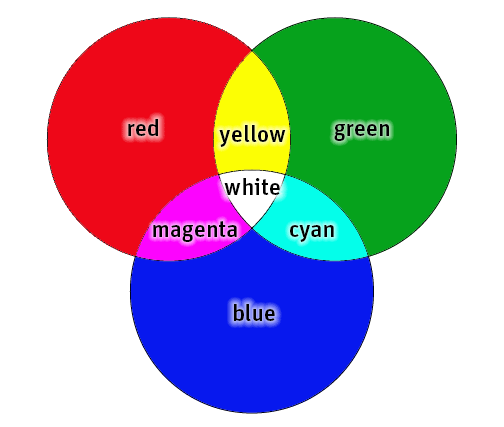Color Models
Fundamentally, The nature of the light reflected from an object determines the colors that humans and some other animals perceive in it. In the electromagnetic spectrum, visible light is made up of a relatively narrow band of frequencies. A body that reflects light that is balanced in all visible wavelengths appears white to the observer. However, a body that favors reflectance in a limited range of the visible spectrum exhibits some shades of color. For example, green objects reflect light with wavelengths primarily in the 500 to 570 nm range, while absorbing most of the energy at other wavelengths.
Cones are the eye sensors responsible for color vision. Extensive experimental evidence has established that the human eye's 6 to 7 million cones can be divided into three major sensing categories, roughly corresponding to red, green, and blue. Approx 65% of all cones are sensitive to red light, 33% are sensitive to green light, and only about 2% are sensitive to blue. However, the blue cones are the most sensitive. The figure below represents average experimental curves detailing light absorption by the red, green, and blue cones in the eye. Because of these absorption characteristics, the human eye sees colors as various combinations of the so-called primary colors: red (R), green (G), and blue (B). The following specific wavelength values for the three primary colors: blue = 435.8 nm, green = 546.1 nm, and red = 700 nm. The primary colors can be added together to produce the secondary colors of light—

magenta (red and blue), cyan (green and blue), and yellow (red and green). Mixing the three primaries, or a secondary with its opposite primary color, in the right intensities produces white light.
Color Models
The purpose of a color model (also called a color space or color system) is to facilitate the specification of colors in some standard way. In essence, a color model is a specification of (1) a coordinate system, and (2) a subspace within that system, such that each color in the model is represented by a single point contained in that subspace.
In terms of digital image processing, The most widely used hardware-oriented models in practice are the RGB (red, green, blue) model for color monitors and a wide range of color video cameras; the CMY (cyan, magenta, yellow) and CMYK (cyan, magenta, yellow, black) models for color printing; and the HSI (hue, saturation, intensity) model, which closely corresponds to how humans describe and interpret color.